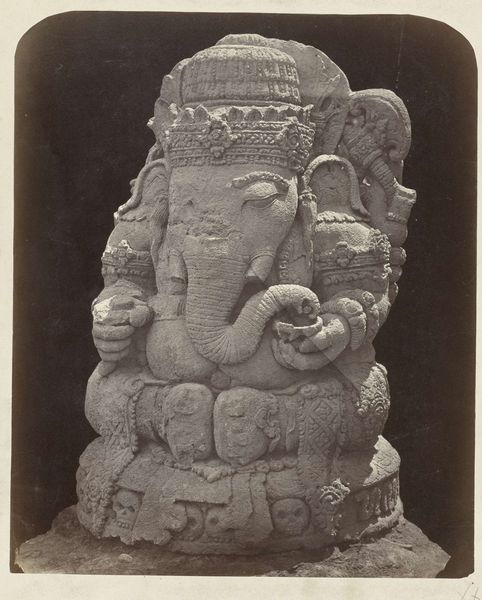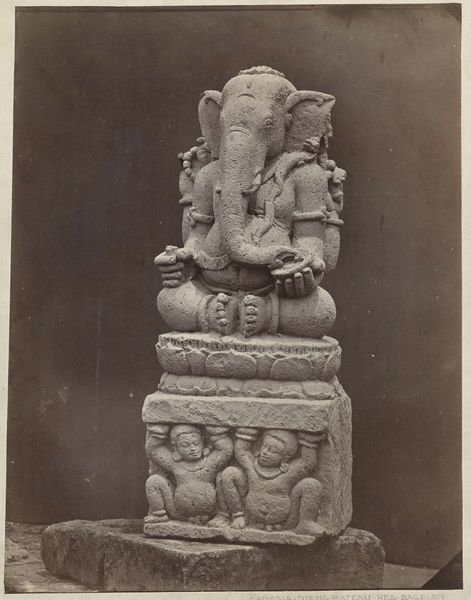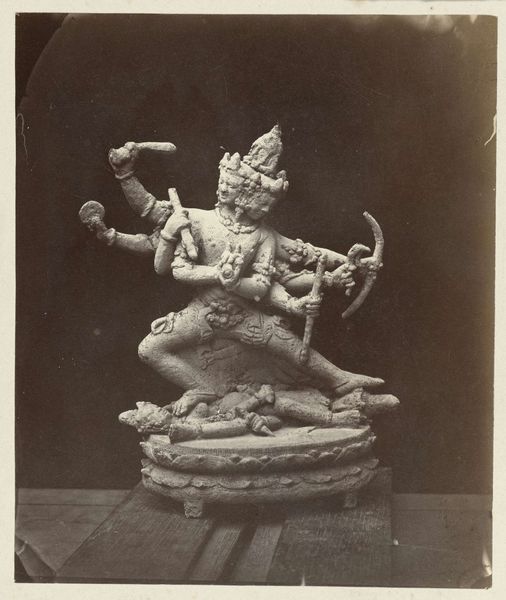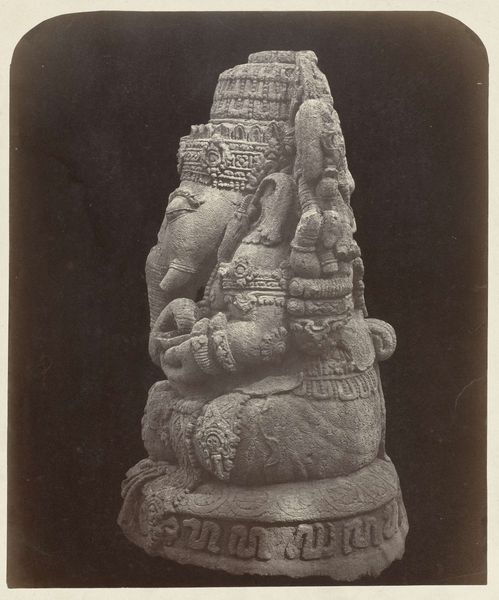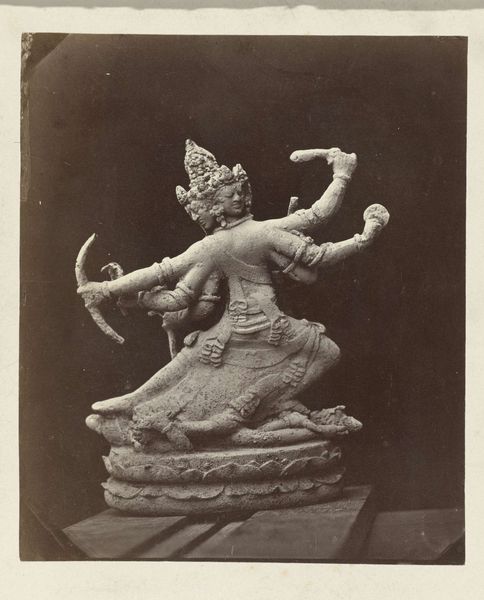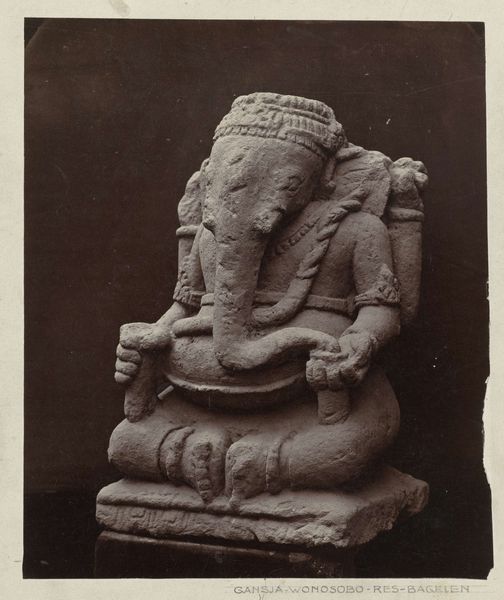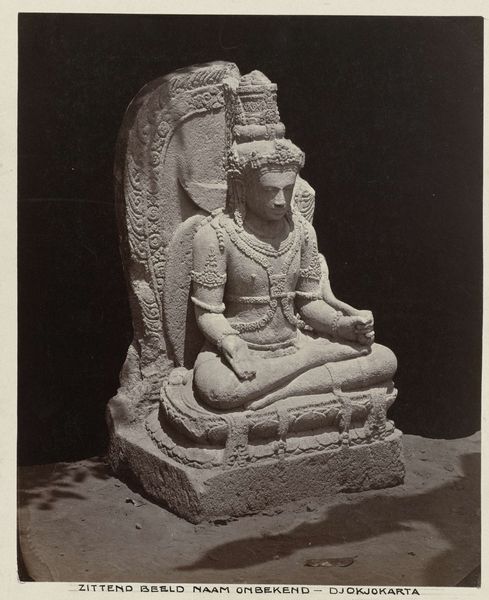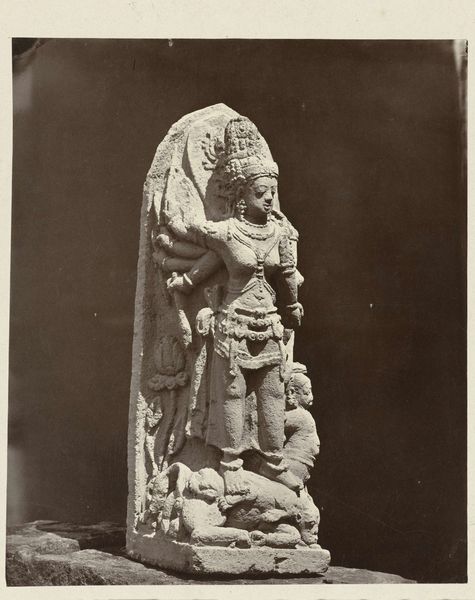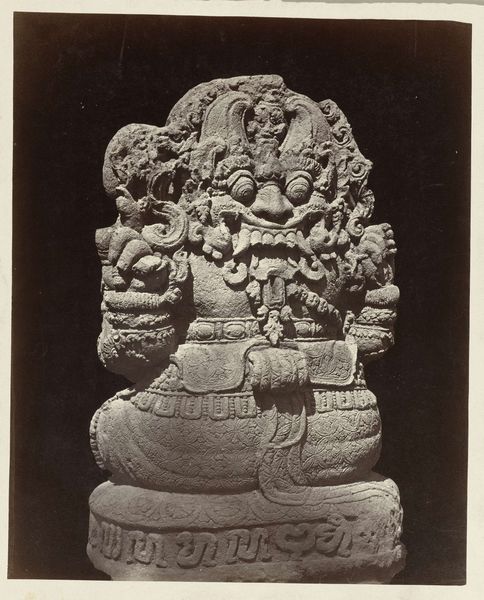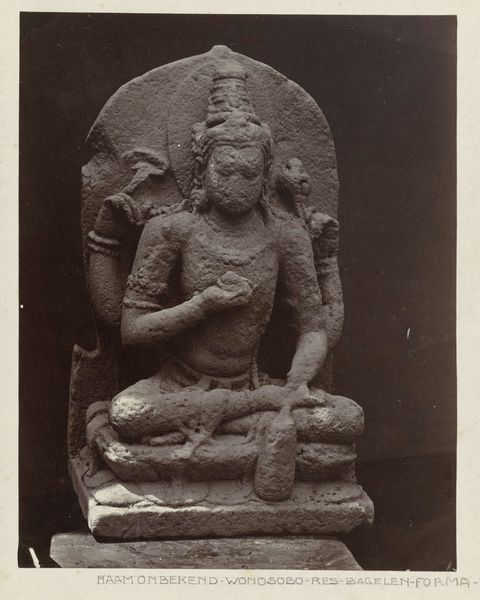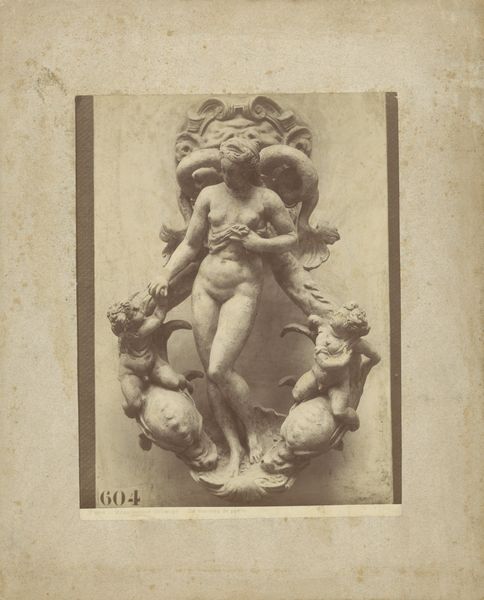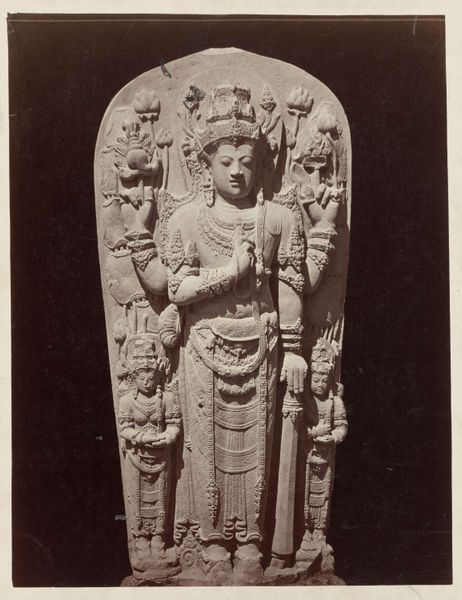
Two armed Ganesha (former Lichte collection). Yogyakarta, Yogyakarta district, D.I. Yogyakarta province, 9th century. Possibly 1865 - 1867
0:00
0:00
sculpture
#
stone
#
sculpture
#
asian-art
#
figuration
#
sculpture
#
statue
Dimensions: height 260 mm, width 210 mm
Copyright: Rijks Museum: Open Domain
Editor: Here we have an image of a sculpture, titled "Two armed Ganesha," believed to have been made in the 9th century in Yogyakarta. It’s currently presented in a photographic reproduction. The texture looks rough, carved perhaps out of sandstone, and the figure emanates a palpable sense of grounded wisdom. What do you make of it? Curator: It resonates deeply, doesn't it? Consider Ganesha, a deity representing new beginnings and the removal of obstacles. The two arms, rather than the more common four, might suggest a focused energy, a directness in purpose. The stone itself speaks of endurance and time. What do you think it means to represent this iconic figure through indigenous sculptural practice? Editor: I imagine it brings a different nuance. I'm trying to imagine what emotions it may bring out to the devotees, other than respect and devotions, knowing Ganesha, in effect, has become local? Curator: Exactly. The indigenous lens offers a unique interpretation, shaping its presentation to reflect the local aesthetic. It underscores the continuous adaptation of cultural memory; think about how Ganesha is reimagined across different regions of Asia. Even in pose and decoration, we find subtle hints about cultural understanding of memory-making, that speak of its origins, the region, and perhaps its patronage. Editor: So, it’s like a visual echo of different cultures reverberating through time? Curator: Precisely. The image becomes a site where cultural symbols interact, layered with historical context and local interpretation, ultimately showing the endurance and ever-changing relationship of identity within devotion. Editor: That makes me look at it completely differently now. I had not considered this to be about so many histories and identities. Curator: And that’s the beautiful complexity of engaging with such images! They invite us to contemplate the many threads of cultural meaning woven into the symbols we think we know.
Comments
No comments
Be the first to comment and join the conversation on the ultimate creative platform.
